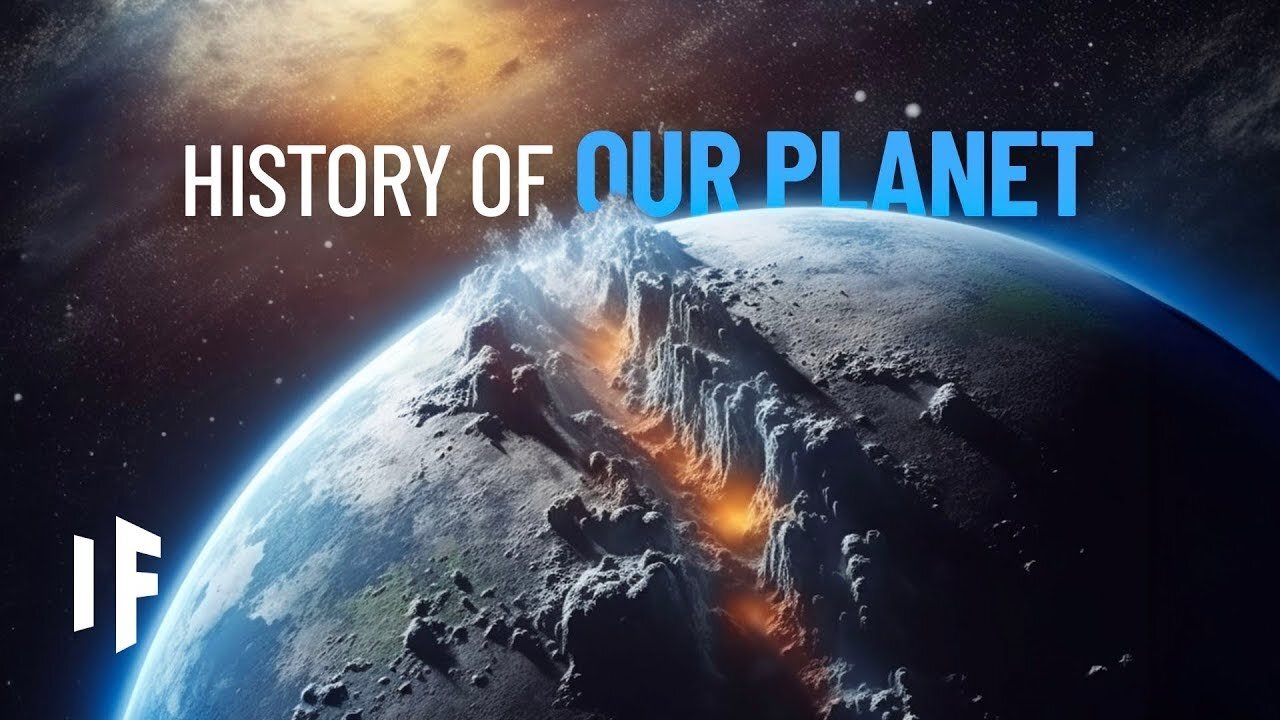Premium Only Content

Earths Evolution in 10 Minutes
The Earth's evolution is a complex and fascinating process that spans billions of years. While it's impossible to cover all the details in just 10 minutes, I can provide a concise overview of the key events and stages in Earth's evolution:
Formation of Earth (4.6 billion years ago): The Earth formed from a swirling cloud of dust and gas around the young Sun. Over millions of years, gravity caused this material to come together, forming a planet.
Hadean Eon (4.6 to 4 billion years ago): During this period, the Earth was a hot, molten world with a hostile environment. Intense volcanic activity and frequent impacts from celestial bodies characterized this eon.
Archean Eon (4 to 2.5 billion years ago): During the Archean Eon, the Earth's surface began to cool and solidify. The first oceans and continents formed, and early life likely emerged, primarily in the form of simple single-celled organisms.
Proterozoic Eon (2.5 billion to 541 million years ago): Oxygen levels in the atmosphere increased due to the photosynthetic activity of cyanobacteria, leading to the Great Oxygenation Event around 2.4 billion years ago. This event transformed the planet and made complex life forms possible.
Phanerozoic Eon (541 million years ago to the present): This eon is characterized by the proliferation of multicellular life, including the rise of various species of plants and animals. It is divided into three eras: Paleozoic, Mesozoic, and Cenozoic.
Paleozoic Era (541 to 252 million years ago): During this era, life on Earth diversified and included the first land-dwelling vertebrates, insects, and the earliest reptiles. The era ends with the largest mass extinction event in Earth's history, the Permian-Triassic extinction.
Mesozoic Era (252 to 66 million years ago): Often called the "Age of Dinosaurs," this era saw the dominance of reptiles on land and the emergence of birds. It ended with the extinction of dinosaurs, likely due to a catastrophic asteroid impact.
Cenozoic Era (66 million years ago to the present): Mammals became the dominant terrestrial animals in the Cenozoic, and the era includes the evolution of primates, leading to the emergence of hominids and eventually humans.
Ice Ages: Throughout the Phanerozoic Eon, the Earth experienced several ice ages, during which vast glaciers covered large portions of the planet.
Human Evolution: Homo sapiens, modern humans, evolved in Africa around 200,000 years ago. They spread across the globe, developing complex societies, agriculture, and advanced technologies.
Throughout Earth's evolution, geological processes, climate change, and biological evolution have shaped the planet's surface and life forms. It's a story of incredible transformation and adaptation that continues to this day
-
 LIVE
LIVE
bogebop
39 minutes agoNo Man's Sky - LIVE -
17 watching -
 LIVE
LIVE
Lofi Girl
2 years agoSynthwave Radio 🌌 - beats to chill/game to
113 watching -
 58:11
58:11
Right Side Broadcasting Network
10 hours agoLIVE: President Trump Addresses the Nation Following U.S. Attack on Iran's Nuclear Sites - 6/21/25
329K227 -

GamersErr0r
9 hours ago $0.01 earnedBig Mac Daddy Bronze King Slay | Marvel Rivals | Rank Terrorist
2641 -
 2:32:47
2:32:47
Raginglumberjackv1
3 hours agoTake Back America Live steam
27 -
 LIVE
LIVE
PandaCoder
2 hours agoStreaming with Buds
79 watching -
 DVR
DVR
Bannons War Room
4 months agoWarRoom Live
24.2M6.23K -
 58:44
58:44
The White House
10 hours agoPresident Trump Delivers Address to the Nation, June 21, 2025
223K415 -
 LIVE
LIVE
KLW World News
11 hours agoBREAKING NEWS! US BOMBS 3 NUKE SITES IN IRAN!
1,286 watching -
 1:45:46
1:45:46
BlackDiamondGunsandGear
9 hours agoAFTER HOURS ARMORY / USA Dropping Bombs / Mike w - Krate Tactical / DLD After Dark
44.5K2